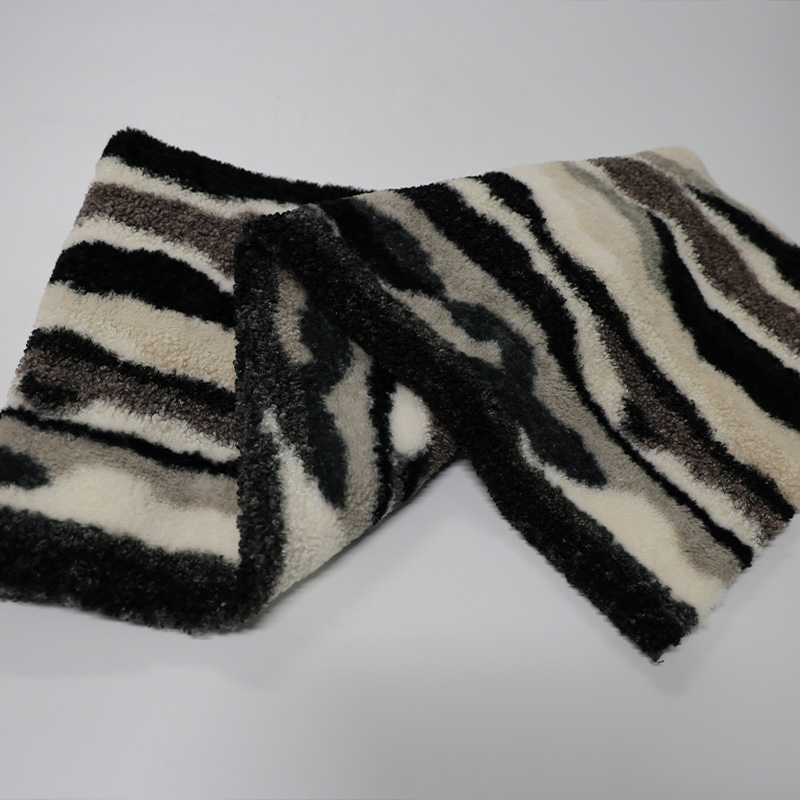











Curled velvet, a textile fabric known for its distinctive, wavy texture and soft touch, has been a staple in the fashion and interior design industries for centuries. Its unique charm and elegance have made it a sought-after material for various applications, from high-end fashion garments to luxurious home decor. However, like any other fabric, curled velvet comes with its own set of merits and demerits. This article aims to explore these aspects, providing a comprehensive understanding of the current industry trends surrounding curled velvet.

Merits of Curled Velvet
Aesthetic Appeal: Curled velvet's most prominent merit lies in its aesthetic appeal. The fabric's wavy texture and soft光泽 create a visually striking and tactilely pleasing effect. This makes it an ideal choice for garments and home decor items that require a sense of luxury and sophistication.
Durability: Despite its delicate appearance, curled velvet is relatively durable. It can withstand frequent washing and wear, maintaining its shape and texture over time. This durability makes it a practical choice for high-use items such as furniture upholstery and curtains.
Versatility: Curled velvet is versatile in terms of design and color. It can be dyed in a variety of shades, allowing for endless customization options. Additionally, its texture can be manipulated to create different patterns and effects, making it a versatile fabric for a wide range of applications.
Comfort: The soft, plush texture of curled velvet makes it highly comfortable to touch and wear. Its ability to retain heat also makes it an excellent choice for cold climates, providing warmth and insulation.
Demerits of Curled Velvet
Cleaning and Maintenance: While curled velvet is durable, it requires special care when cleaning. The fabric's delicate texture can be easily damaged by harsh detergents or improper cleaning techniques. This can be a drawback for consumers who prefer low-maintenance fabrics.
Crushing and Creasing: Curled velvet is prone to crushing and creasing, especially when subjected to pressure or folded for long periods. This can detract from its aesthetic appeal and require frequent steaming or ironing to restore its original texture.
Price: Due to its intricate manufacturing process and high-quality materials, curled velvet tends to be more expensive than other fabrics. This can be a limiting factor for consumers on a budget, as it may not be feasible to use curled velvet for large-scale projects or multiple items.
Light Sensitivity: Curled velvet is sensitive to light, particularly direct sunlight. Exposure to prolonged sunlight can cause fading and discoloration, reducing the fabric's visual appeal over time. This makes it less suitable for outdoor applications or rooms with large windows.
Industry Trends
In recent years, the fashion and interior design industries have seen a resurgence in the popularity of curled velvet. Designers and consumers alike have embraced its timeless elegance and versatility, incorporating it into a wide range of products from couture garments to home decor accessories. As such, manufacturers have responded by offering more diverse color options, textures, and patterns to meet the growing demand.
However, despite its increasing popularity, curled velvet's demerits remain a concern for some consumers. Efforts to address these issues, such as developing more durable and easier-to-clean fabrics, are ongoing within the industry. As technology advances and consumer preferences evolve, it is likely that curled velvet will continue to adapt and remain a relevant and popular choice in the fashion and interior design worlds.
In conclusion, curled velvet offers a unique combination of aesthetic appeal, durability, and comfort that makes it a standout fabric in the fashion and interior design industries. However, its cleaning and maintenance requirements, price, and sensitivity to light are significant demerits that consumers should consider before making a purchase. By understanding both the merits and demerits of curled velvet, consumers can make informed decisions that align with their needs and preferences.